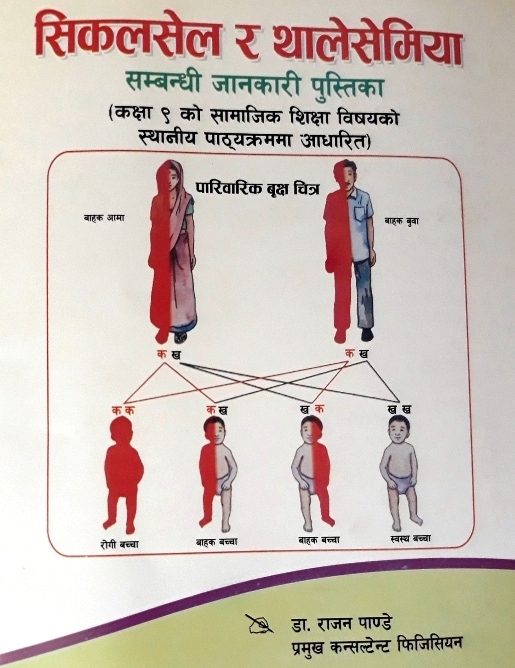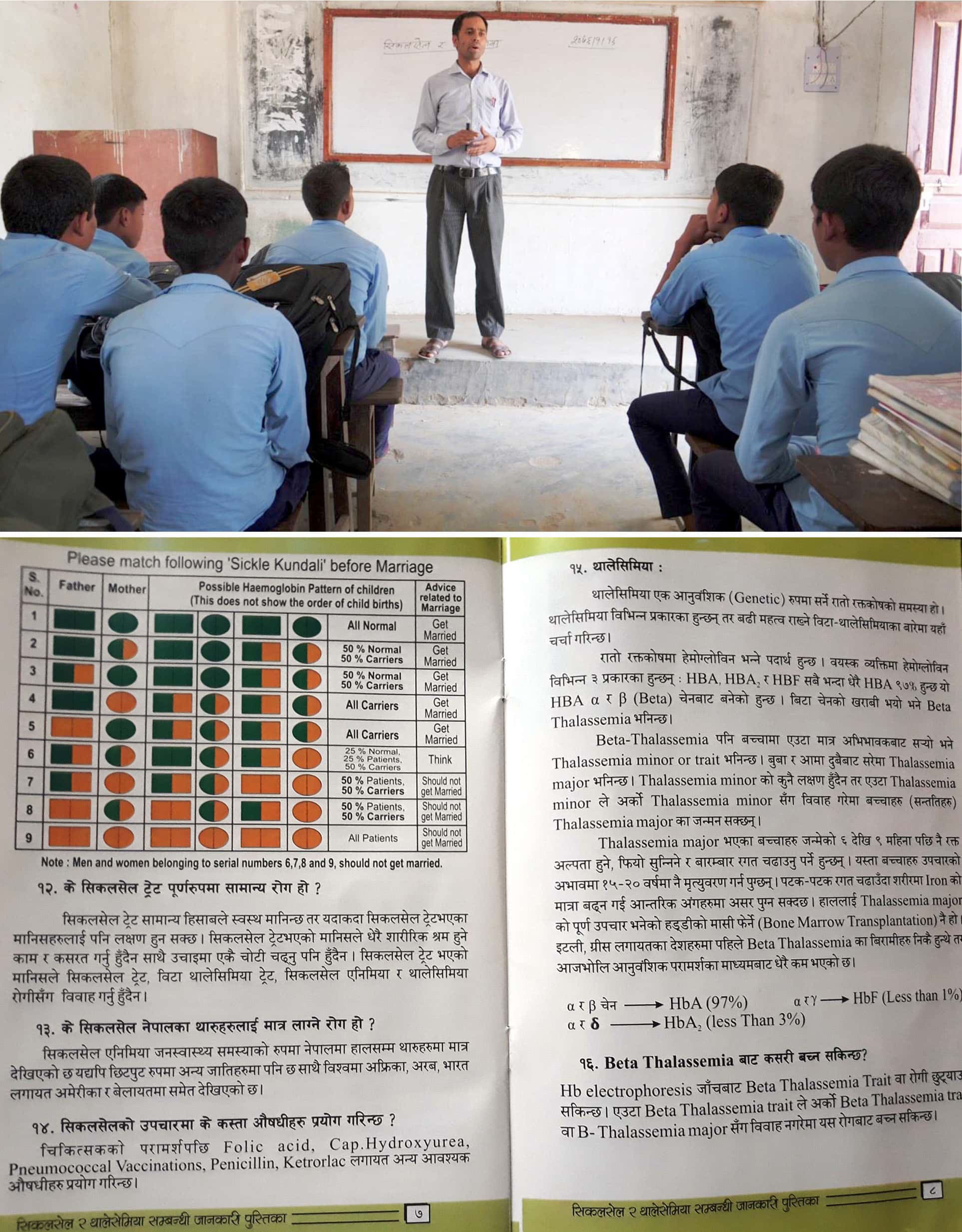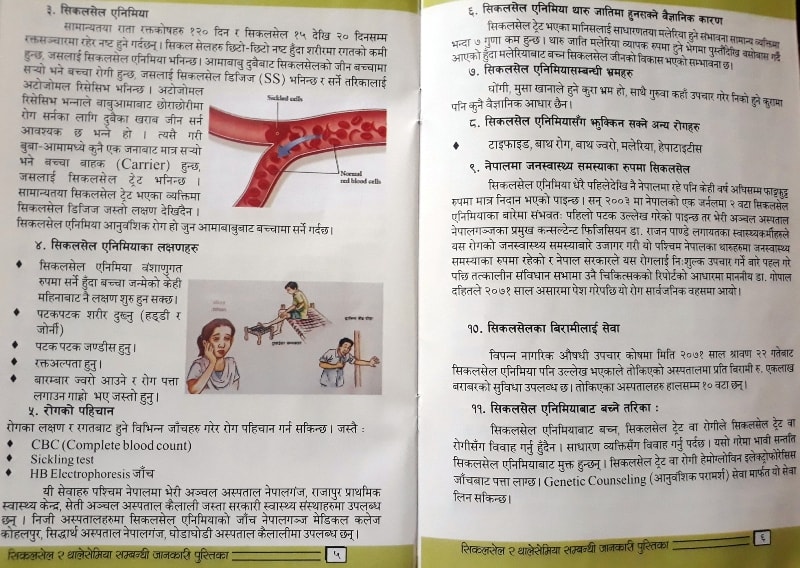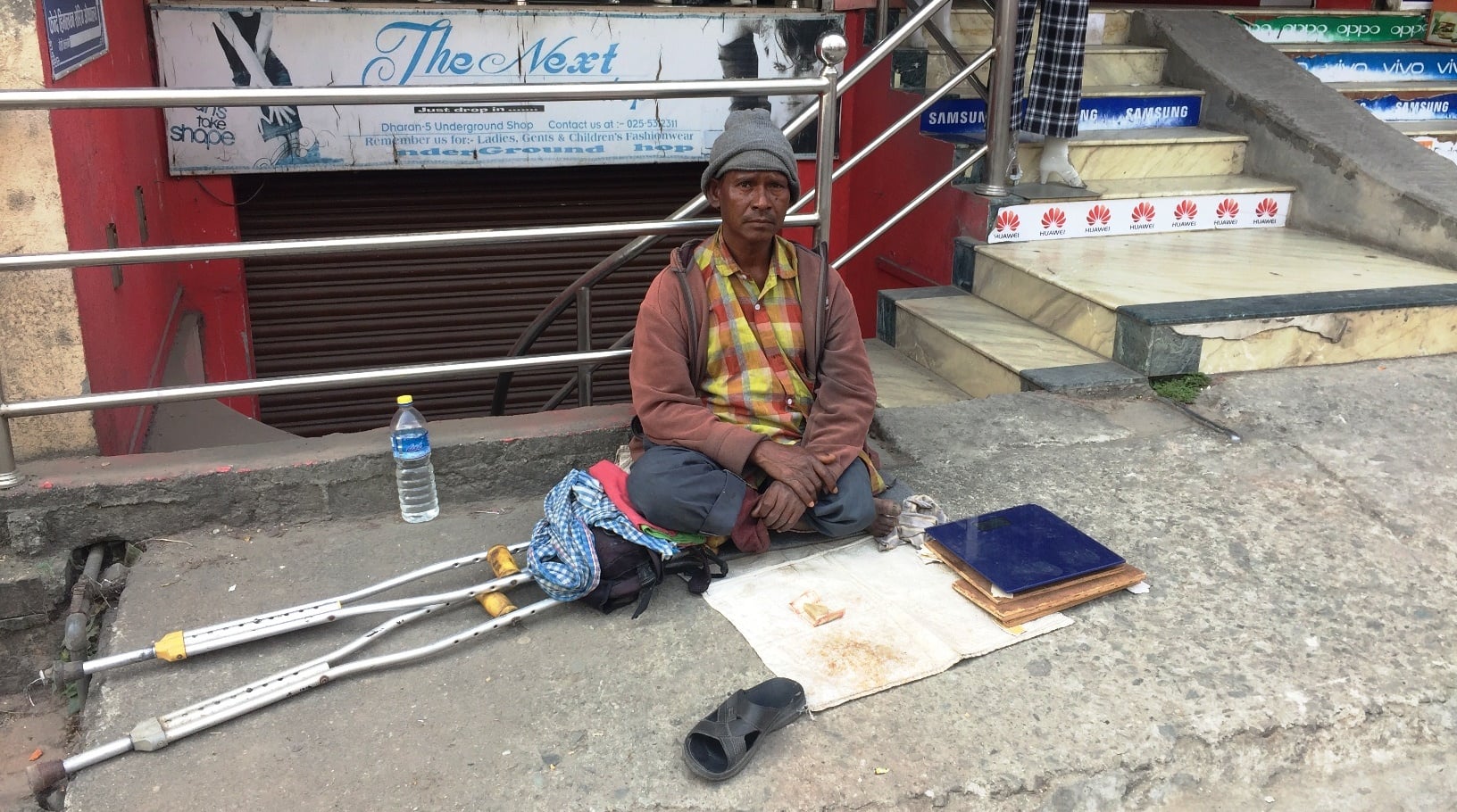Barbardiya Municipality has taken initiatives to teach Grade 9 and 10 students about sickle cell anaemia and thalassemia at 17 schools
Krishna Adhikari: Centre for Investigative Journalism-Nepal
 On April 29, a class on a new topic was going on in Grade 9 Section A of the Panchajanya Secondary School in Bardiya. Social studies teacher Toyanath Sapkota was teaching students sickle cell anaemia. When he uttered the name of the disease, students from the Tharu community listened with extra attention.
On April 29, a class on a new topic was going on in Grade 9 Section A of the Panchajanya Secondary School in Bardiya. Social studies teacher Toyanath Sapkota was teaching students sickle cell anaemia. When he uttered the name of the disease, students from the Tharu community listened with extra attention.
Students’ attention was drawn to the teacher’s discussion on sickle cell anaemia, which affects the Tharu community much. The ninth graders had been familiar with the discussions held in the village about the disease. Saroj Tharu, a student, said that he was happy to hear the discussion in class about the disease.
The main interest of students was about the causes of sickle cell anaemia, ways to find out about the disease, its symptoms and treatment. Having been informed about it in school, the students have started discussing the ailment in their family and community. “These days, villagers also have been informed about the disease. The knowledge we got at school is being spread to households and villages too,” Saroj said.
Headmaster Govinda Dhakal says the teaching about sickle cell anaemia at school has been helpful in clearing the misconceptions about the ailment, spreading awareness in society about it and to teach students precautionary measures. “Under the practical method, students are taken to hospital to meet patients, discuss their problems and effects of the disease.”
The students are asked to draw pictures of red blood cells affected by sickle cell anaemia and make presentations in class. According to the headmaster, question answer, problem solving, demonstration, observation, project work, inquiry and field visits are the methods used for instruction.
This may have resulted from an increased awareness at school and the community that Tharu people have started ascertaining the presence or absence of sickle cell anaemia in men and women before fixing their marriage. Ninth grader girl Asha Tharu says: “Sickle cell has started to figure in negotiations about marriage.”
In Barbardiya, the arrangements for classes on sickle cell anaemia in schools were made by the municipality. The local government has implemented a local curriculum on sickle cell anaemia at all its schools. In Grade 9, the local curriculum has been incorporated in the Social Studies subject. The municipality plans to take the curriculum implemented in Grade 9 since September 8, 2018 to Grade 10 from the new academic year.
 Barbardiya may have been the first municipality in the country to start instruction on sickle cell anaemia in government schools. This initiative is believed to increase awareness of the disease not only among the Tharus but also other castes and communities of the municipality. Barbardiya Mayor Durga Bahadur Tharu says: “Sickle cell is seen more in the Tharu community. Since our municipality has a majority of the Tharus, we’ve prepared a local curriculum and started classes in order to save the Tharu community from sickle cell and to increase awareness.”
Barbardiya may have been the first municipality in the country to start instruction on sickle cell anaemia in government schools. This initiative is believed to increase awareness of the disease not only among the Tharus but also other castes and communities of the municipality. Barbardiya Mayor Durga Bahadur Tharu says: “Sickle cell is seen more in the Tharu community. Since our municipality has a majority of the Tharus, we’ve prepared a local curriculum and started classes in order to save the Tharu community from sickle cell and to increase awareness.”
Besides starting instruction on sickle cell anaemia in the government schools of its area, the municipality has set aside Rs 41,572,000 (more than 32 per cent of its total budget) in the current fiscal year to improve the overall quality of education. The share of federal budget for the education sector is less than 10 per cent overall.
Dr Rajan Pande, chief consultant physician at Bheri Hospital Nepalgunj, prepared the Grade 9 curriculum for sickle cell anaemia. After preparing the course, he trained the secondary level social studies teachers of Barbardiya on the subject. The teachers started teaching after the session. The Grade 10 local curriculum for sickle cell anaemia ready for implementation was jointly prepared by Dr Pande, and Associate Professor Dr Pragya Gautam and Paediatrician Dr Roma Bohara of the Nepalgunj Medical College Teaching Hospital.
Fourteen government and three private secondary schools of Barbardiya Municipality have implemented the 25 marks Sickle Cell curriculum in Grades 9 and 10. Tikaram Gosai, chief of the education, youth and sports section of the municipality, said the subject is taught at least two periods a month–at least 18 periods in an academic year. “This will greatly benefit not only students but the community as well,” says Gosai. The curriculum involves basic information about the anaemia, its symptoms, diagnosis and ways to be safe from it.
According to the 2011 Census, Barbardiya Municipality has a population of 68,144—nearly 72 per cent of it Tharus. The initial study report of the Nepal Health Research Council shows that more that 10 per cent of the Tharus have sickle cell anaemia. In the current fiscal year, the municipality tested the blood of the Tharu residents for anaemia and thalassemia. According to council chairman Anjani Kumar Jha, the blood of some 20,000 Tharus is being tested at Bir Hospital for sickle cell anaemia. The final reports are due to be ready by the third week of June.
What is sickle cell anaemia
Hemoglobin Electrophoresis is tested in a person’s blood to find out about sickle cell anaemia. Dr Pandey says the newborn can be free of infection if the couple take precautions. “As the disease is taught at school, we have growing hope that adolescents will be careful while marrying,” he said.
 If the parents have sickle cell anaemia, the ailment may be seen even in their unborn child. Physicians generally suggest that such couples not give birth. There are facilities to test the health of the foetus. If tests find the foetus to be anaemic, abortion is suggested, according to Dr Pandey. The school curricula have this information.
If the parents have sickle cell anaemia, the ailment may be seen even in their unborn child. Physicians generally suggest that such couples not give birth. There are facilities to test the health of the foetus. If tests find the foetus to be anaemic, abortion is suggested, according to Dr Pandey. The school curricula have this information.
Sickle cell anaemia is so pervasive among the Tharus in the west that up to seven members of a family have been found infected with it. So far, the disease has been found in the Tharu communities of Dang, Banke, Bardiya, Kailali and Kanchanpur. The symptoms of sickle cell anaemia include inadequate blood, jaundice, joint pain, swelling, body ache, weight loss and mild fever. Mayor Durga Bahadur Tharu suggests that the local curriculum implemented in Barbardiya schools should be followed in other local federal units as well to benefit their affected populations. “All the schools having majority Tharu students must teach about sickle cell,” he says.
Since August 2015, the government has been providing free diagnosis and treatment for the patients of sickle cell anaemia from Bheri Hospital, Nepalgunj. At this hospital alone, 2,000 patients of sickle cell anaemia have been recorded.
The hemoglobin in red blood cells carries oxygen and nutrients to cells across the body. Sickle cell anaemia affects this process adversely and creates problems in the body. However, the instruction on sickle cell anaemia at schools, awareness programmes in community and blood tests of Tharu people have sensitised the affected community about the disease.
Of late, there has been an increase in the number of patients visiting Bheri Hospital, Nepalgunj for treatment and counseling. Every week, the hospital receives two new cases of sickle cell anaemia. About 40 per cent of the cases involve unmarried young adults. Besides learning about the disease, pubescents visiting the hospital have also started enquiring about the precautions to take while marrying. “Unmarried people visiting the hospital have growing interest about sickle cell. This is positive,” said Dr Pande.



